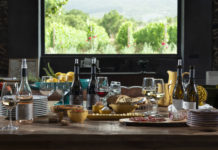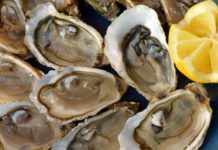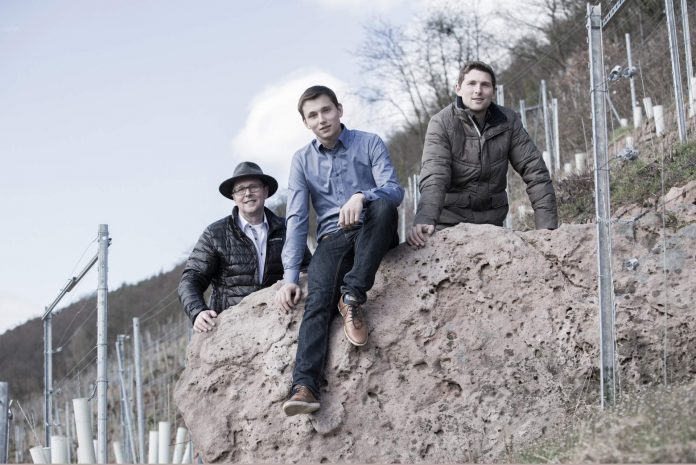
Großwallstadt, Germany (Gastrosofie). The Franconian red wine trail is not quite 80 kilometres long and leads between Spessart and Odenwald through the Lower Franconian Main Valley, where a family of vintners here to be presented lives and produces good wines.
A worthwhile place to start walking along the path is Lützeltaler Berg, a red wine location in Großwallstadt, and from there go via Obernburg, Elsenfeld, Erlenbach, Klingenberg, Großheubach, and Miltenberg to Bürgstadt or make it in the opposite direction. Then you end up at one of the six vineyard sites of the winery Giegerich and certainly in the Häckerstube of this winegrower family – but more about that later.
The vineyard locations
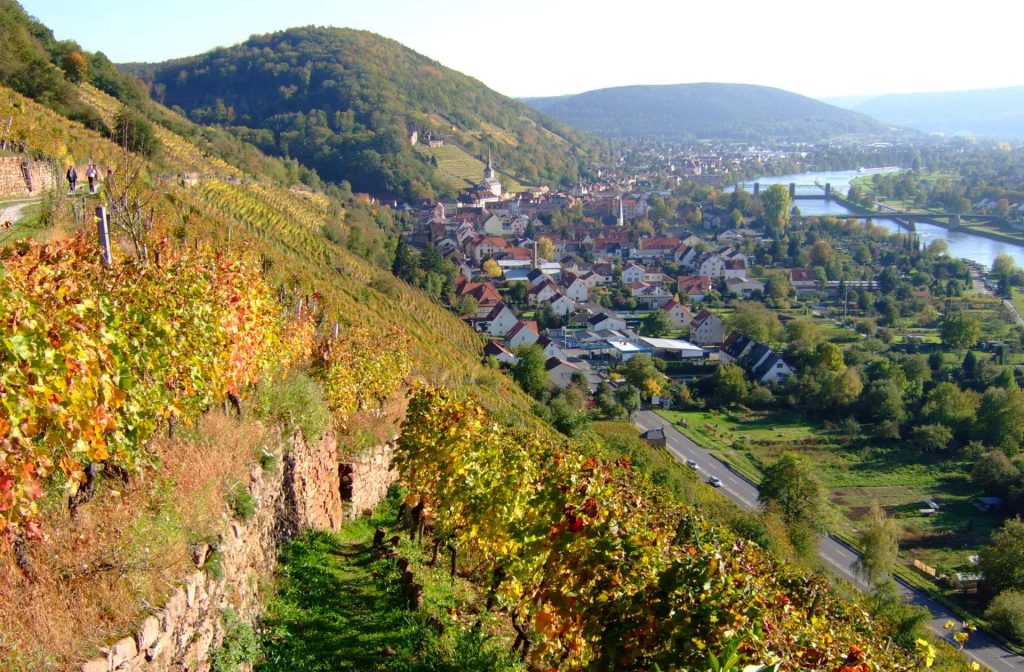
are, to begin with, the 6.7 hectares of red sandstone weathering with loess and loam layer in Lützeltal, where the grape varieties Pinot Noir, Chardonnay, Pinot Noir précoce and Pinot Blanc grow and the Pitztal with 6.9 hectares of profound red sandstone residual soil with loess and loam layer on which thrive the grape varieties Pinot Noir, Riesling and Sylvaner. Also on this side of the river, the 4.8 hectares in the location Campestres Wörth consist of loamy sand where Pinot Noir précoce, Klevner, Riesling and Müller-Thurgau are the most important grape varieties.
On the other side of the Main, more wine grows on 13.3 hectares at the Rücker Schalk, where vines for Silvaner, Sauvignon Blanc and Muscat manage on meagre red sandstone residual soil, and on 20.5 hectares on Klingenberger Schlossberg, whose barren red sandstone residual soil gives hold for Pinot Noir vines.
The southern slopes of these locations on the Main Quadrangle can be inspected. In super summers with tropical and desert days like this year, the sun-lit locations should impress especially as would the variety of the multifarious wines.
The family-run winery Giegerich produced at this terroir in the short-featured locations on currently 12 hectares of vines quality wines. In doing so, it claims to put „a focus on organic, sustainable and responsible management“ of the vineyards.
The wines
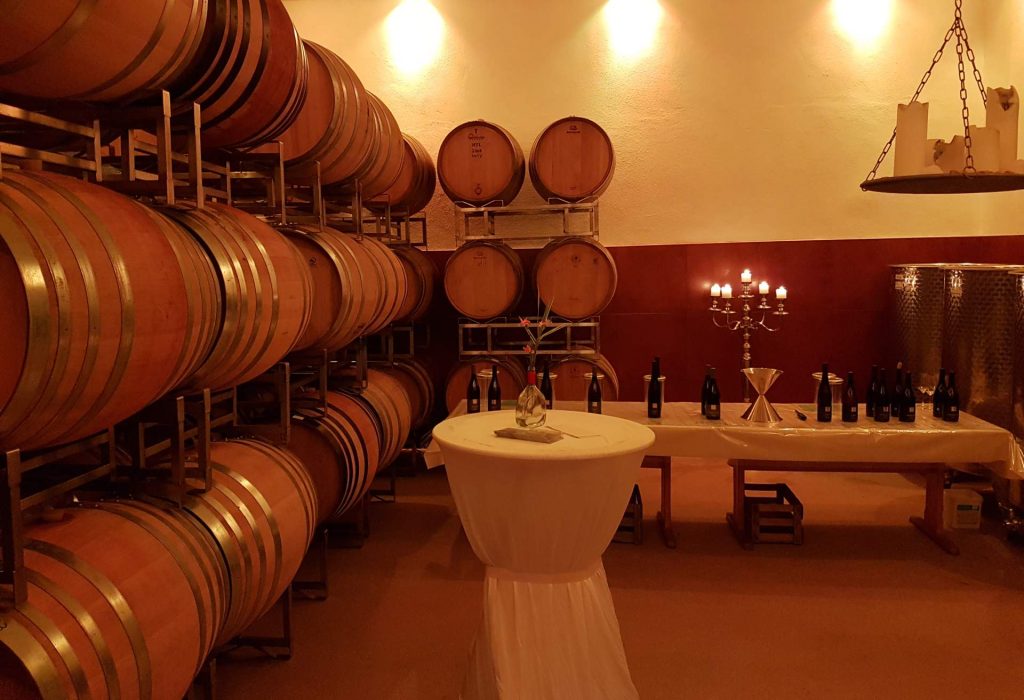
are classified by Helga and Klaus Giegerich and the adult sons Kilian and Philipp in three categories: Fresh and fruity, Terra and Carius. The fresh and fruity are the 2018er vintages, including Belissima in red and white, Portugieser and Baccus, Rotling and Riesling. These wines are „light, fruity and finesse“.
The wines of the category Terra are characterized by the special minerality of the soil on which the vines grow and thrive, as well as by „structure and clarity“. These include Spätburgunder (Pinot Noir) Buntsandstein (red sandstone) 2017 and Spätburger (Pinot Noir) Muschelkalk 2017, Silvaner 2017 and Sauvignon Blanc 2017, Pinot Blanc 2017 and Blanc de Noir 2017, a white wine made from red grapes.
Carus is the category for the valuable and precious wines from Giegerich. These are, above all, the 2016 Riesling, Chardonnay, Pinot Noir and Frühburgunder, but also a 2015 Silvaner MG Reserve and a 2017 Silvaner. Giegerich describe the qualitative top in their assortment as characterful wines. „Ambition, patience and ‘finger tip feeling’ as well as the love of wine growing“ would give „these wines their unique character“. They contain „a high maturation potential“.
We already tasted two wines. The Großwallstädter Chardonnay Kirchenstück 2017 with 13.5% vol. Alc. von Giegerich is not only a dry Franconian, but also a local wine characterized by clarity and truth, structure and minerality. It has an intense, strong taste, is rich in content and goes well with summery food. The Pinot Noir Buntsandstein with 13% vol. Alc. is a dry estate wine with ruby red colour and complex fruit flavours. It is decently round up to the finish and more balanced in the tannin structure.
The festivals
The good and very good wines can be tasted in the Häckerstube and courtyard of the award-winning winery Giegerich. Excellent? In the wine guide Gault & Millau 2019 the winery Giegerich is rated as a good, in Eichelmann 2019 even as „very good winery“. The Feinschmecker 2018/2019 puts it like this: „This winery is one of the best in Germany.“ And the Vinum wine guide Germany 2019 honoured the winery Giegerich with two stars.
The last Häckerzeit was this June and the next will probably take place from August, 20 until September, 1. Also the first Häckerzeit of the coming year, from January, 17 to February, 2, may already be noted.
You should definitely visit Giegerichs Häckerstubekabarett. The winery Giegerich changes from time to time to become a cabaret stage. Family Giegerich offers its guests not only food and drink, but also merrymaking cabaret and theatre evenings.
So gee get going to enrich yourself wine-wise at
Winery Giegerich
Address: Weichgasse 19, 63868 Großwallstadt
Contact: Phone: +49 (0)6022/655355, E-Mail: info@weingut-giegerich.de
Web: weingut-giegerich.de
Opening hours for wine sales: Tuesdays to Fridays from 10am to noon and from 2pm to 6pm, Saturdays from 9am to 1pm
Remarks:
Christopher Prescott based on a text by Ole Bolle.


